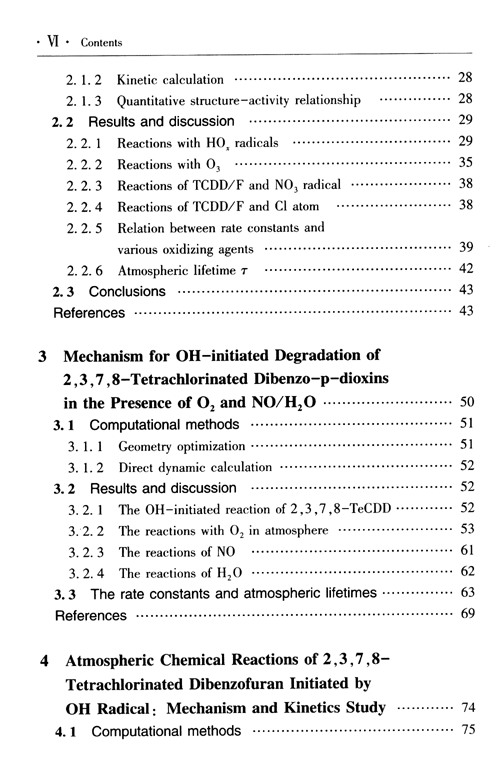Dioxins arethegeneralterm for polychlorodibenzo-p-dioxins (PCDDs) and polychlorodibenzofurans (PCDFs). Due to their properties of carcinogenesis, tetratogenesis and mutagenesis, and may enter human body through food chain and endanger the human health, PCDD/Fs have been enlisted in Stockholm Convention. The major sources of PCDD/Fs are waste incineration, chemical industry production, metal smelting and refining process, and paper manufacturing industry.The PCDD/Fs in the atmosphere are in the form of gas phase or particles, which are mainly influenced by saturated vapor pressure and temperature. At the ambient temperature, low chlorinated PCDD/Fs (mainly with six or less chlorine atoms) have high concentration in the gas phase, while high chlorinated PCDD/Fs (primarily hepta-and octa-chlorinated homologues) mainly distributed in the particle phase. In the flue gas, 82%-93% of PCDD/Fs are distributed in the gas phase due to high temperature. The atmospheric fate for PCDD/Fs is removed from the atmosphere via the dry or wet deposition, photolysis and the reactions with the atmospheric oxidants (including OH radical, HO2 radical, O3, NO3 radical, and Clatom). Particle-phase PCDD/Fs are removed from the atmosphere via the dry or wet deposition, while gas-phase PCDD/Fs are depleted via photolysis and degradation reactions. It is critical to know the reaction mechanism and accurate rate coefficients of PCDD/Fs with various oxidants in order to assess their dominant atmospheric fate.


